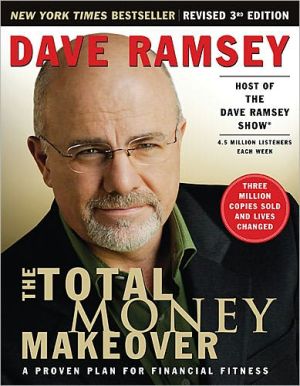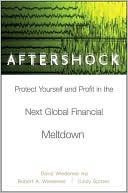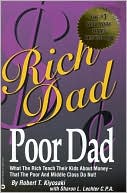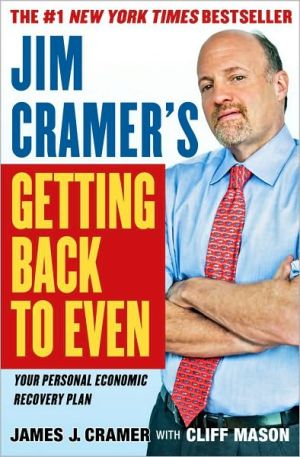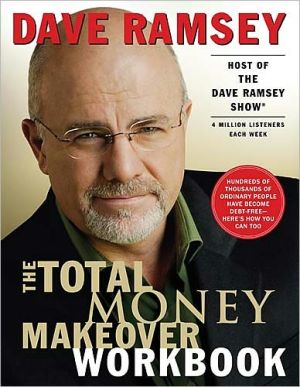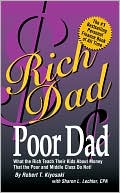Financial Success for Young Adults and Recent Graduates: Managing Money, Credit, and Your Future
There are numerous financial planning and money management handbooks, but few focus on the needs of young adults between 16 and 25 years of age. Colleges and some high schools are increasingly offering courses covering money management, but the materials are more focused on economics than the real world. Young people form a powerful group of consumers-who want what they want when they want it-but many have not been taught the value of planning and accumulation in order to reach their goals....
Search in google:
Two of the most important aspects of good money management are the time-value of money and its associated compounding and the true concept of credit. Financial Success for Young Adults and Recent Graduates explains these issues at length, provides case studies, and also addresses: paying for college; insurance; retirement benefits; savings and investment options; and obtaining and managing credit loans. VOYA With the Internet, peers, and flashy television ads tempting teens and recent college grads to spend, spend, spend, this new book might be just what they need. Arrowood covers everything from handling credit to doing taxes in clear and easy-to-understand language. Quotes from teens, recent graduates, and their parents are included in each chapter so that the reader not only hears the author's views but also many others. Arrowood uses a pair of fictional twins who are alike in many ways (same income, same major, etc,) but very different in their spending and investing habits to illustrate a variety of situations. For example, sixteen-year-old Alex saves $112 a week, whereas Phoenix saves only $45. Arrowood explains how at age sixteen, it might not be a big difference, but as time goes on, a penny saved is truly a penny earned. To further challenge the reader, there are thought-provoking exercises included at the end of each chapter. Although only the most financially minded teens would pick up this resource on their own, it would be a great tool for classroom use. For this reason, it is highly recommended for school libraries but only suggested for public libraries where there is a demand for this topic.
Acknowledgments ixIntroduction xiThe Basics 1Money Management and Financial Planning 3The Importance of Planning 5Taking (or Giving Up) Control: The Choice Is Yours 7More Money Management and Financial Planning 17What's in It for You 23The Highlights: What's in This Book for You 25A Brief History of Money and Credit 27Money: A History 29Credit: A History 31What Affects the Value of Your Money? 33Interest 35Inflation 41The Time Value of Money 43What Is Credit? How Do You Mangage Credit? 49Credit and Loans 51Credit Cards: The Nitty-Gritty 57Getting and Using Credit Cards 61Managing Credit Cards and Avoiding Becoming a Fraud Victim 69Protecting Your Credit, Yourself, and Your Credit Rating 75Protecting Your Credit 77Managing Your Credit 79Identity Theft 87Life Is Very Taxing 95Taxes, Deductions, and Your Income: The Basics 97Taxes, Deductions, and Your Income: The Details 101Basic Tax Planning 111Getting (and Losing) a Job 113Finding the "Perfect" Job 115Losing Your Job/Changing Jobs 125Managing Your Money: The Basics 129Savings Accounts 131Checking Accounts 133Managing Your ATM/Debit/Bank Card 143Managing Overdraft Protection 147Alternatives to Checks 149Getting and Paying for an Education 151Choosing a High School 153To "Gap" or Not to Gap 155What Do Colleges Look For? 157Choosing the "Right" College or University 163Maximizing Your Ability to Get Financial Aid: At Any Age 169Where's the Money? For College,That Is! 171Understanding and Getting Financial Aid 179Stand Out in the Crowd 189Living within Your Means 191The Budget Process 193Saving and Investing 199Building Your Savings and Starting an Investing Program 201Saving and Investing: Advanced 207Personal Retirement Plans 215Understanding, Obtaining, and Managing Personal Insurance 219Auto Insurance 221Personal Property Insurance 223Life Insurance 227Personal Disability (Sick Pay) Insurance 231Personal Medical Insurance 233Putting the Pieces Together 235Building a Personal Financial Plan 237Let's Merge 243When Two Become One 245Employer-Provided or -Sponsored Benefit Plans 247Group Insurance Benefits 249Retirement Plans and Stock Options 253Other Employer-Offered or-Sponsored Benefits 259Planning for Major Purchases without Breaking the Bank 261The "Wise" Use of Debt 263Making the Big Purchases 265Starting a Business 267The Major Elements for a Successful Business 269Glossary 275Useful Forms and Documents 277Answers to Practice Problems 313About the Author 319
\ VOYA\ - Shari Fesko\ With the Internet, peers, and flashy television ads tempting teens and recent college grads to spend, spend, spend, this new book might be just what they need. Arrowood covers everything from handling credit to doing taxes in clear and easy-to-understand language. Quotes from teens, recent graduates, and their parents are included in each chapter so that the reader not only hears the author's views but also many others. Arrowood uses a pair of fictional twins who are alike in many ways (same income, same major, etc,) but very different in their spending and investing habits to illustrate a variety of situations. For example, sixteen-year-old Alex saves $112 a week, whereas Phoenix saves only $45. Arrowood explains how at age sixteen, it might not be a big difference, but as time goes on, a penny saved is truly a penny earned. To further challenge the reader, there are thought-provoking exercises included at the end of each chapter. Although only the most financially minded teens would pick up this resource on their own, it would be a great tool for classroom use. For this reason, it is highly recommended for school libraries but only suggested for public libraries where there is a demand for this topic.\ \

